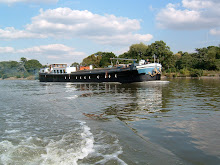However, the ridge has a sad history as a much sought after strategic point : in 1814 5000 French and 7000 Russian soldiers died on this hill in a matter of days during Napoleon’s victorious Battle of Craonne; a mere century later the toll grew as four years of bloodshed stained the countryside.
We visited the “Caverne du Dragon”, a quarry with extensive tunnel systems which sits on the top of the hill. The French had lost this quarry to the Germans in 1915. The Germans had then converted it into a large underground barracks, complete with electricity, first-aid posts, chapel, bath house, cemetery and firing positions. It took the French two years to recapture it. And then the Germans counterattacked and reclaimed a section of the cave. Bizarrely the enemies lived in the same place, separated by mere walls, some of which had ventilation holes. The men were in constant fear. Above ground soldiers worried that the enemy was below them and that they would be blown up. Below ground they suffered from cave collapses and feared attacks from the neighbours.
It is a very eerie place.
World War 1 involved 60 million people from 90 different countries. The Chemin des Dames became the living hell for many of these nationalities. On the hill beside the quarry there is now a striking monument to the “Senagalese” soldiers who suffered heavy losses on this hill. There is archive footage of them doing drill and images of them seeing snow for the first time.
World War 1 involved 60 million people from 90 different countries. The Chemin des Dames became the living hell for many of these nationalities. On the hill beside the quarry there is now a striking monument to the “Senagalese” soldiers who suffered heavy losses on this hill. There is archive footage of them doing drill and images of them seeing snow for the first time.
In April 1917 the French launched a massive attack on the German positions. Five million shells fell on the hill over five days. Amazingly, the German positions were not destroyed. Unfortunately, the shells remained.
After 1918 they tried to clear the battlefield. Farms and villages were rebuilt and vast war cemeteries were created. However, some areas could never be reclaimed. Brave souls from the Forestry Commission planted trees in these areas. They are now mature forests but you must not enter them. They are the camouflage for the old trenches, shell holes and fragile ordnance. Every year the ground releases these dangerous relics. Last year they retrieved 40 tons.
It is so hard to believe that this happened on such a beautiful hill. Dan, aged 8 and wise beyond his years, wrote about it in his journal :
“…in place of all the sorrow, evil and pointlessness that had taken place on this land, there were dozens and dozens of fields of sunflowers…”




I was at exactly that spot in Chemin de Dames back in March with my military course. Up on the hill by the memorial for the Senagalese soldiers. Seamus
ReplyDelete